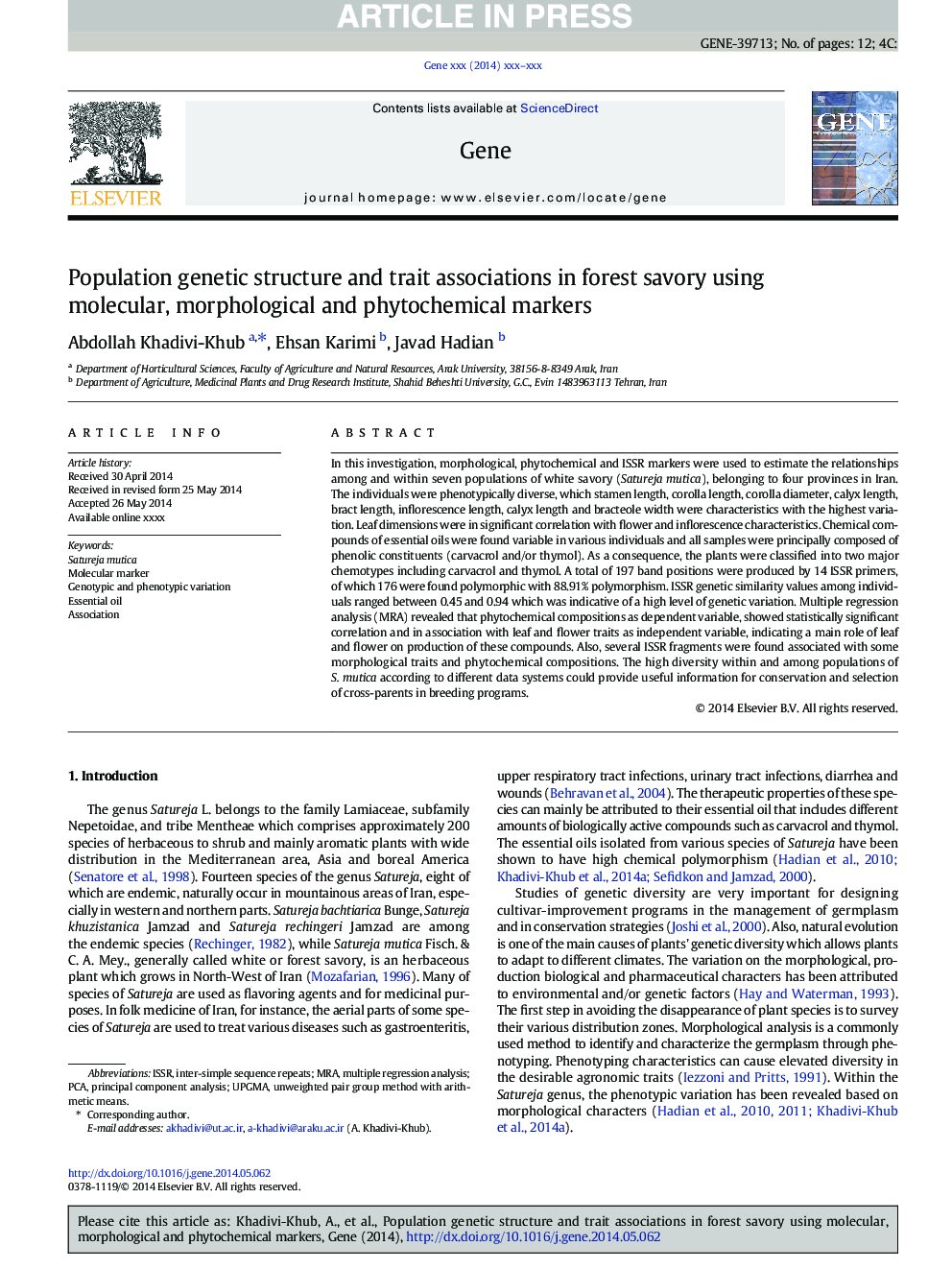| Article ID | Journal | Published Year | Pages | File Type |
|---|---|---|---|---|
| 5905713 | Gene | 2014 | 12 Pages |
Abstract
In this investigation, morphological, phytochemical and ISSR markers were used to estimate the relationships among and within seven populations of white savory (Satureja mutica), belonging to four provinces in Iran. The individuals were phenotypically diverse, which stamen length, corolla length, corolla diameter, calyx length, bract length, inflorescence length, calyx length and bracteole width were characteristics with the highest variation. Leaf dimensions were in significant correlation with flower and inflorescence characteristics. Chemical compounds of essential oils were found variable in various individuals and all samples were principally composed of phenolic constituents (carvacrol and/or thymol). As a consequence, the plants were classified into two major chemotypes including carvacrol and thymol. A total of 197 band positions were produced by 14 ISSR primers, of which 176 were found polymorphic with 88.91% polymorphism. ISSR genetic similarity values among individuals ranged between 0.45 and 0.94 which was indicative of a high level of genetic variation. Multiple regression analysis (MRA) revealed that phytochemical compositions as dependent variable, showed statistically significant correlation and in association with leaf and flower traits as independent variable, indicating a main role of leaf and flower on production of these compounds. Also, several ISSR fragments were found associated with some morphological traits and phytochemical compositions. The high diversity within and among populations of S. mutica according to different data systems could provide useful information for conservation and selection of cross-parents in breeding programs.
Keywords
Related Topics
Life Sciences
Biochemistry, Genetics and Molecular Biology
Genetics
Authors
Abdollah Khadivi-Khub, Ehsan Karimi, Javad Hadian,
